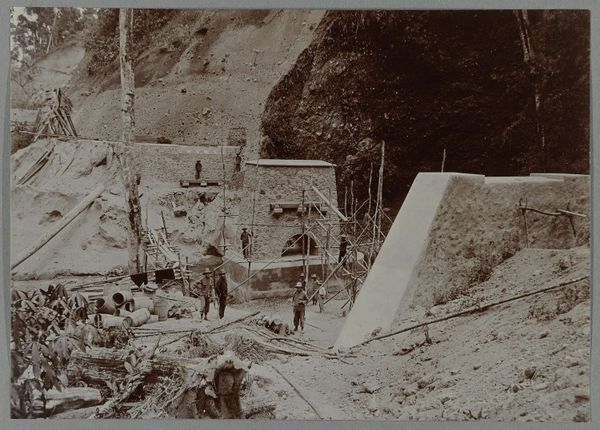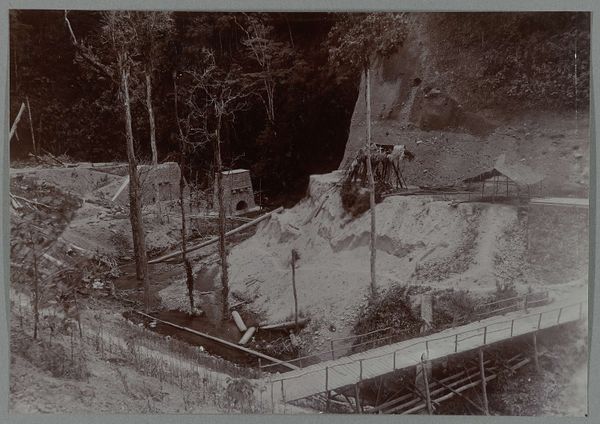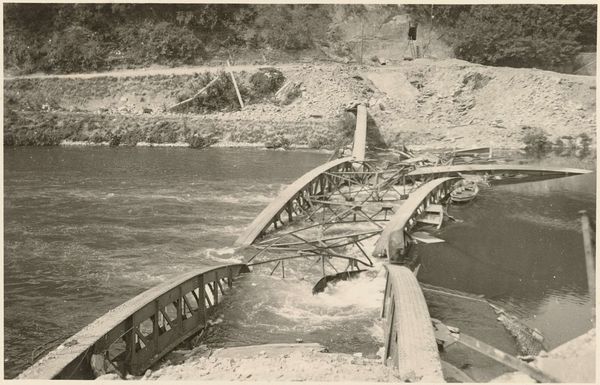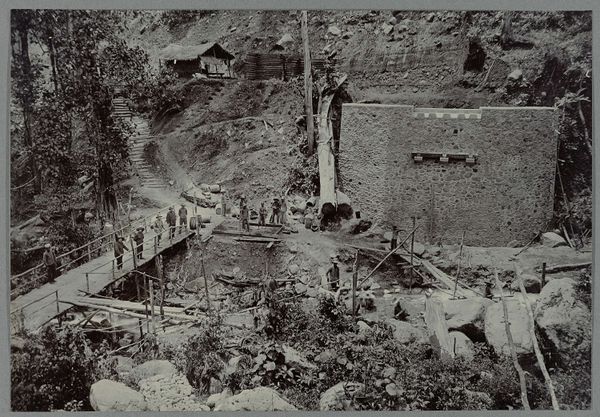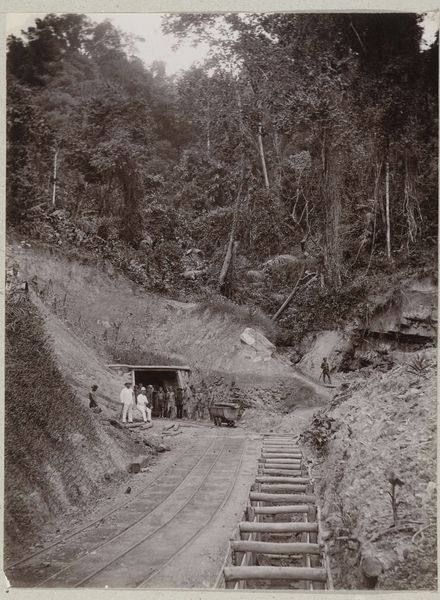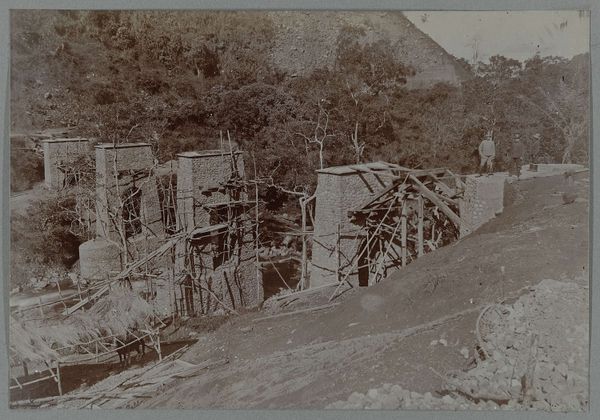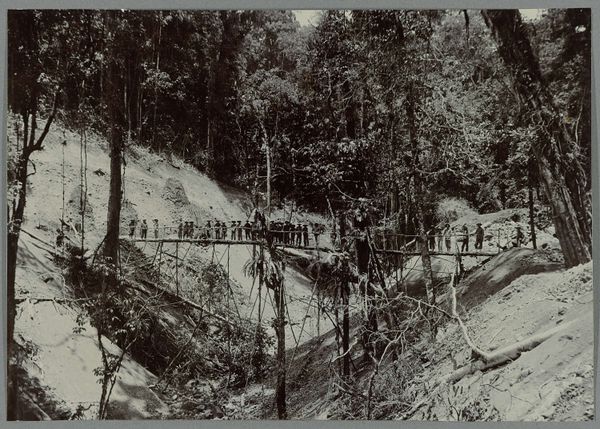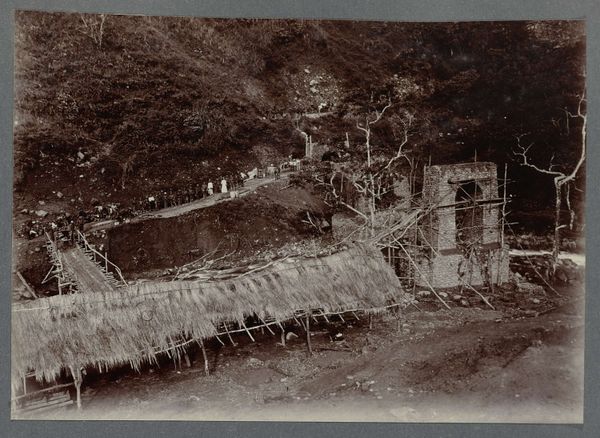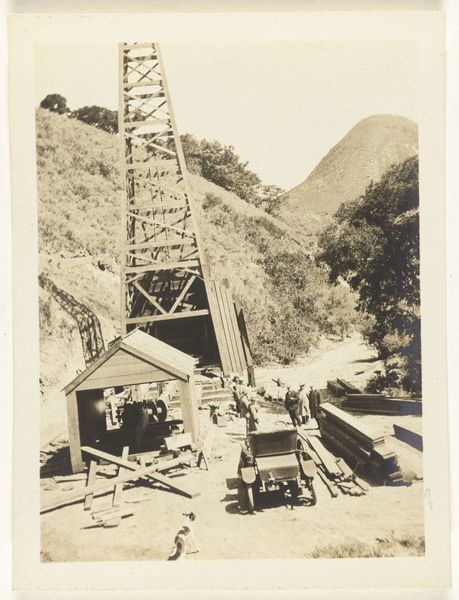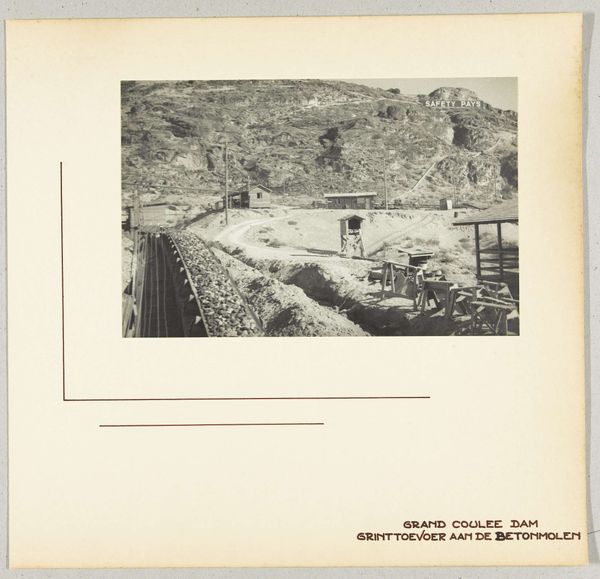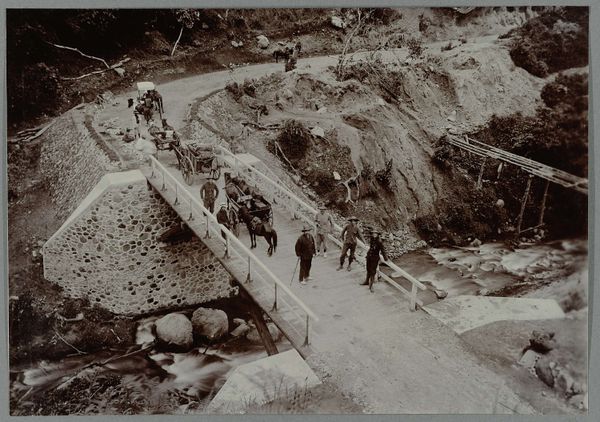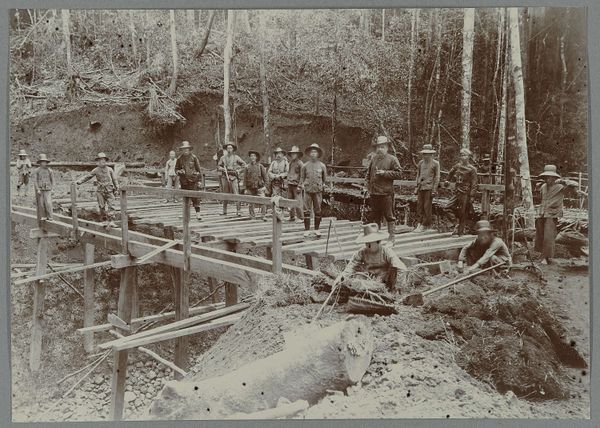
print, photography, gelatin-silver-print
# print
#
war
#
landscape
#
photography
#
gelatin-silver-print
#
history-painting
Dimensions: height 13 cm, width 19 cm
Copyright: Rijks Museum: Open Domain
Editor: Here we have "Politionele actie op Java," a gelatin silver print, possibly from 1947, by Anefo. It depicts soldiers on what appears to be a railway track, against a lush, somewhat imposing landscape. It feels very staged, but carries a strong sense of tension. How do you interpret this work in light of its historical context? Curator: It's a powerful image, especially considering the Dutch term “Politionele actie," or police action, used to frame the brutal reality of colonial violence in Indonesia. It attempts to neutralize the action. How does this image, ostensibly a piece of photojournalism, actually participate in constructing a specific narrative, one that obscures the true nature of the conflict and the experiences of the Indonesian people? Editor: That’s interesting. So, even the choice of referring to it as a “police action” already carries a certain… bias? Curator: Precisely. The image romanticizes war while sanitizing it; this photograph contributes to a colonial rhetoric, doesn’t it? What voices are silenced by this particular depiction? Where are the accounts and perspectives of those who bore the brunt of this so-called police action? Editor: The people of Java, obviously, who would have experienced this as invasion and violence. Curator: And their absence here is deafening, isn't it? Their experiences become footnotes to the supposed heroism of the colonizers. Think about the visual language, the deliberate framing of the soldiers. It almost mimics the aesthetic of propaganda. Editor: I hadn't considered that the staged feel of the photograph might be part of a larger project of justifying colonial actions. It makes you question the photographer's role, doesn’t it? Curator: It certainly does. We need to remember that what is presented as neutral documentation is frequently laden with ideologies and power dynamics. Hopefully that understanding allows us to re-evaluate images from that period. Editor: I see it now. Looking at it through that lens completely changes how I understand this photograph. It's a great insight.
Comments
No comments
Be the first to comment and join the conversation on the ultimate creative platform.
